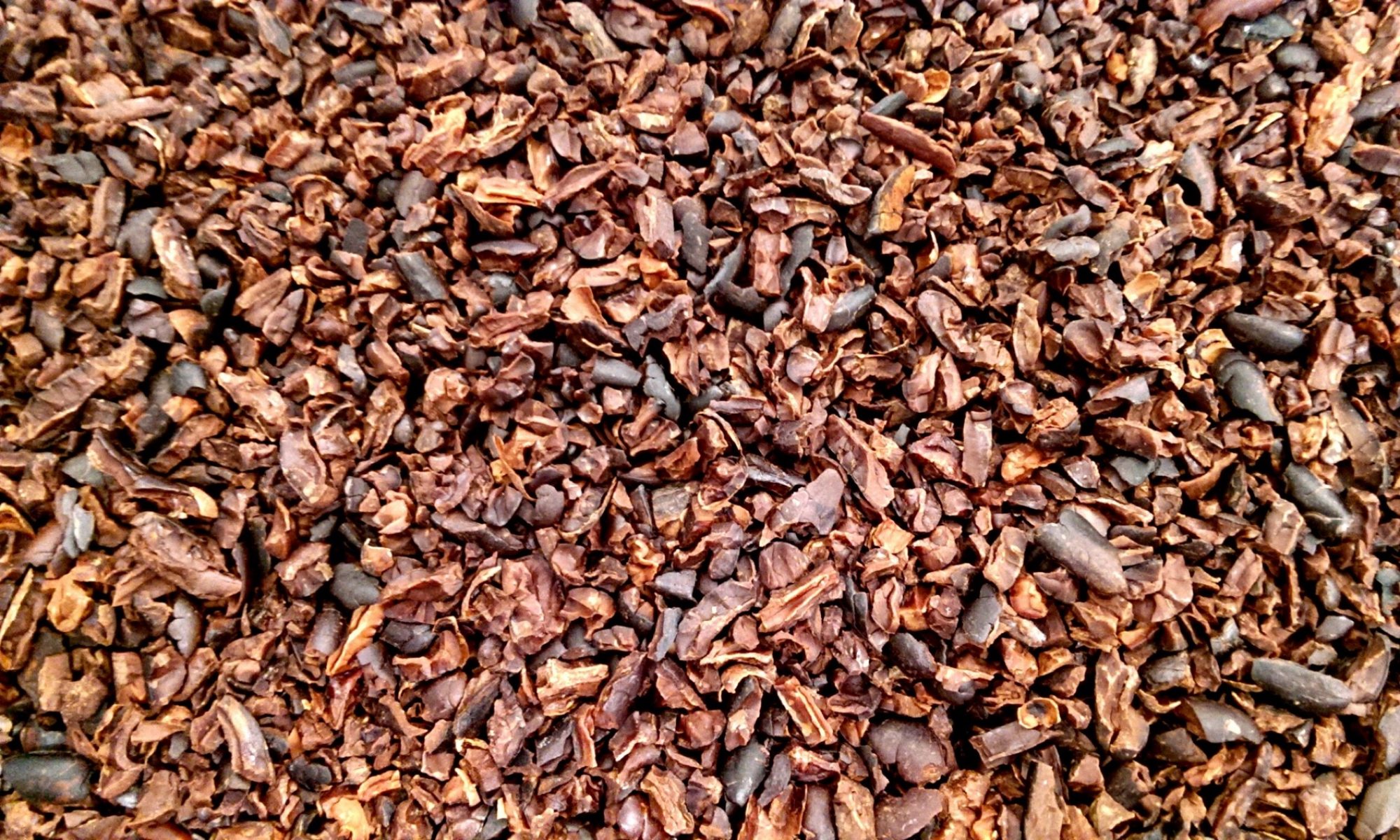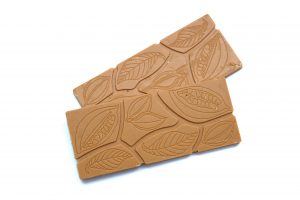- Synopsis
- A white chocolate made with caramelised milk.
- Author
- Dom Ramsey in conjunction with York Cocoa Works
- Version
- 1.0
- License
- Creative Commons Attribution 4.0 International
- Shortcut URL
- xtc.tc/102
- Last Updated
- 13 October 2018
Ingredients
- 40% Cocoa butter (Deodorised)
- 30% Unrefined Cane Sugar (Golden Caster Sugar)
- 29.5% Whole Milk Powder
- 0.3% Vanilla Powder
- 0.2% Sea Salt
Technical Information
- Grind / Conch time: Standard/Low (24 hours for 3kg Premier grinders, 48 hours for 30kg CocoaTown melangers).
Method
Due to the difficulty of producing large amounts of caramelised milk, the simplest method of production is to use a small melanger. 24 hours in a 3kg Premier desktop grinder is sufficient, and for larger batches I recommend 48 hours in a 30kg+ size melanger such as a CocoaTown ECGC-65.
- Caramelise The Milk Powder.
For large batches of product, caramelisation will need to be done in several small batches.
Place milk powder into a metal pan or bowl and into an oven at around 120C. Stir the milk powder every 5-10 minutes with a metal spoon, being carful to break up clumps and thoroughly mix in any caramelised milk from the bottom of the pan.
Keep doing this until the milk is a rich caramel / biscuit colour and matching biscuity aroma. It is a slow process, so as long as it is watched and stirred regularly it shouldn’t burn.
This process may take 90 minutes and requires constant attention. I found the weight decreased by approximately 0.5% with caramelisation, so be sure to make enough and build your recipe based on the final weight.
- Pre-melt the cocoa butter and slowly add it to the melanger along with the sugar.
- Slowly add the caramelised milk powder, allowing time for the chocolate to return to a liquid state before adding more.
- Add the vanilla and sea salt.
- Once complete, the chocolate can be tempered using your standard method for white chocolate.
Notes
Consider the addition of sunflower lecithin to this chocolate at up to 0.5% by weight. The high milk powder content and the fact that it is caramelised tend to make the chocolate a little thick. Although the chocolate flows well, lecithin would likely help with tempering and moulding, and may allow for a small lowering the cocoa butter content, thus intensifying the flavour.
The addition of spices such as cinnamon may help bring out the biscuit-like flavour of the caramelised milk even more.
Using the same recipe, it’s possible to produce a similar result by caramelising the sugar rather than the milk. The resulting chocolate will have more caramel and less biscuit flavour notes, but will still be pleasant. The primary disadvantage is that the resulting caramel – and finished chocolate – will be hygroscopic, absorbing moisture in the air and having a tendency to become sticky to the touch if left for too long in a cooling fridge or humid environment.
For this option, make a dry caramel using the sugar, pour and leave to cool completely. Once completely cool, break apart the caramel and place the pieces in a powerful blender to grind them back into a powder.
License

Caramelised White Chocolate by XTC Chocolate is licensed under a Creative Commons Attribution 4.0 International License.
Based on a work at https://xtc.tc/102.
Permissions beyond the scope of this license may be available at https://xtc.tc/licensing/.

